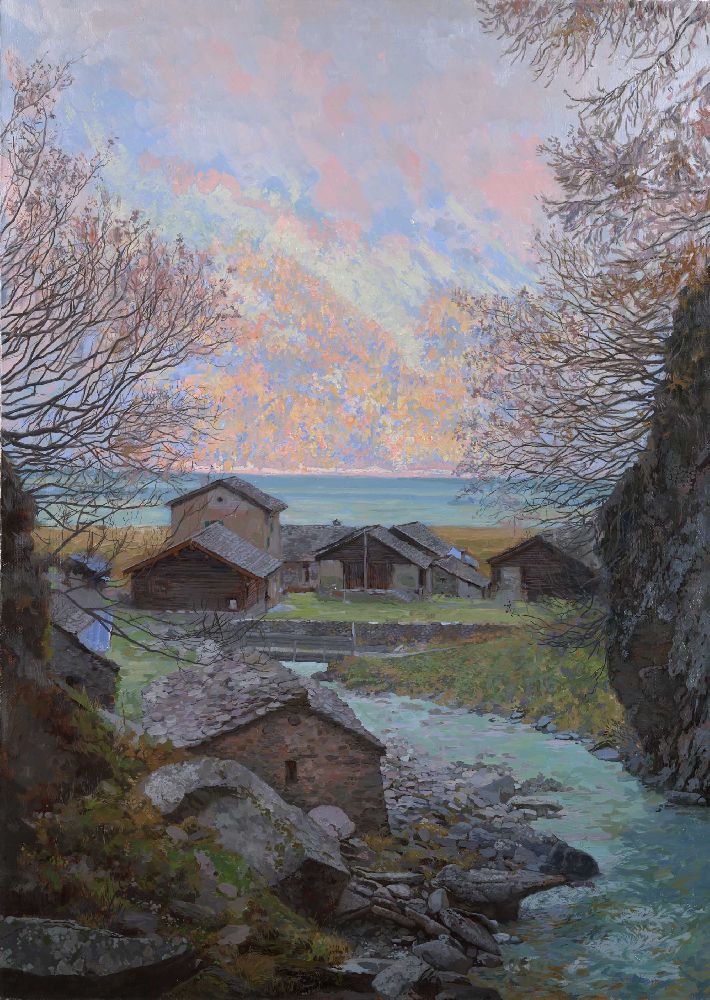

Title: Sils Maria Izola by artist Simon Kozhin
Shipping: $800.00
Artist: N/A
Period: Contemporary
History: N/A
Origin: N/A
Condition: Museum Quality
Item Date: 2007
Item ID: 3073
Sils Maria Izola by artist Kozhinart studio: Oil Painting It is painted by full-scale sketch in the studio after trip to Switzerland (village not far from San-Moritz). In the course of the work I met some locals, On that day the weather was changing too often and I felt cold. My new local friends made me drunk with grog and long asked about Russia.
http://en.wikipedia.org/wiki/Painting
Painting is the practice of applying paint, pigment, color or other medium to a surface (support base). In art, the term describes both the act and the result, which is called a painting. Paintings may have for their support such surfaces as walls, paper, canvas, wood, glass, lacquer, clay or concrete. Paintings may be decorated with gold leaf, and some modern paintings incorporate other materials including sand, clay, and scraps of paper. Painting is a mode of expression, and the forms are numerous. Drawing, composition or abstraction and other aesthetics may serve to manifest the expressive and conceptual intention of the practitioner. Paintings can be naturalistic and representational (as in a still life or landscape painting), photographic, abstract, be loaded with narrative content, symbolism, emotion or be political in nature. A portion of the history of painting in both Eastern and Western art is dominated by spiritual motifs and ideas; examples of this kind of painting range from artwork depicting mythological figures on pottery to Biblical scenes rendered on the interior walls and ceiling of The Sistine Chapel, to scenes from the life of Buddha or other scenes of eastern religious origin. What enables painting is the perception and representation of intensity. Every point in space has different intensity, which can be represented in painting by black and white and all the gray shades between. In practice, painters can articulate shapes by juxtaposing surfaces of different intensity; by using just color (of the same intensity) one can only represent symbolic shapes. Thus, the basic means of painting are distinct from ideological means, such as geometrical figures, various points of view and organization (perspective), and symbols. For example, a painter perceives that a particular white wall has different intensity at each point, due to shades and reflections from nearby objects, but ideally, a white wall is still a white wall in pitch darkness. In technical drawing, thickness of line is also ideal, demarcating ideal outlines of an object within a perceptual frame different from the one used by painters.